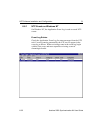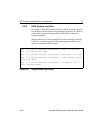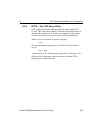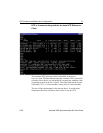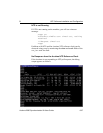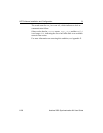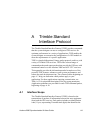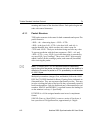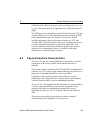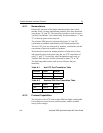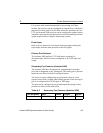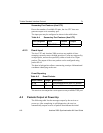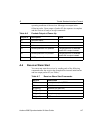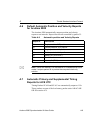
A-2 Acutime 2000 Synchronization Kit User Guide
Trimble Standard Interface Protocol
A
meaning and format of the data that follows. Each packet begins and
ends with control characters.
A.1.1 Packet Structure
TSIP packet structure is the same for both commands and reports.The
packet format is:
<DLE> <id> <data string bytes> <DLE> <ETX>
<DLE> is the byte 0x10, <ETX> is the byte 0x03, and <id> is
apacket identifier byte, which can have any value except for
<ETX>and <DLE>. The bytes in the data string can have any value.
To prevent confusion with the frame sequences <DLE> <id> and
<DLE><ETX>, every <DLE> byte in the data string is preceded by
an extra<DLE> byte ('stuffing'). These extra <DLE> bytes must be
added ('stuffed') before sending a packet, and removed ('unstuffed')
after receiving the packet.
!
Note – A simple <DLE> <ETX> sequence does not necessarily
signify the end of the packet, as these can be bytes in the middle of a
data string.The end of a packet is <ETX> preceded by an odd number
of <DLE> bytes.
Multiple-byte numbers (integer, float, and double) follow the ANSI/
IEEE Std 754 IEEE Standard for Binary Floating-Point Arithmetic as
illustrated below. They are sent most-significant-byte-first. This may
involve switching the order of the bytes as they are normally stored in
Intel-based machines. Only the fractional part of the mantissa for real
numbers, SINGLE and DOUBLE, is reported because the leading bit
on the mantissa is always 1. Specifically:
INTEGER is a 16-bit unsigned number sent in two's complement
format.
SINGLE (float, or 4 byte REAL) is sent as a series of four bytes; it
has a precision of 24 significant bits, approximately 6.5 digits.



